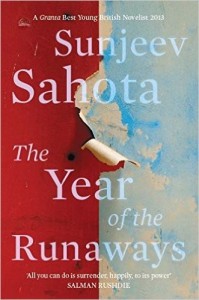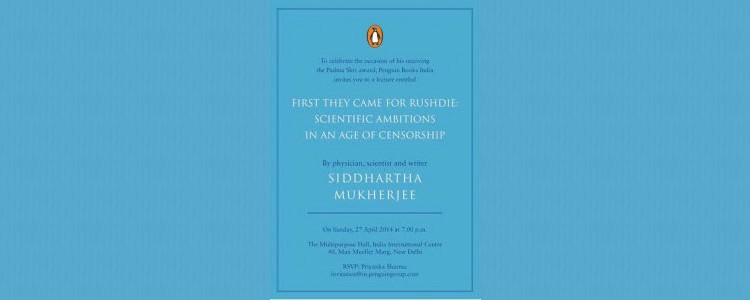Max Porter “Grief is the thing with Feathers”
‘If your wife is a ghost, then she is not wailing in the cupboards and corners of this house, she is not mooching about bemoaning the loss of her motherhood or the bitter pain of watching you boys live without her.’
‘No?’
‘No. Trust me, I know a bit about ghosts.’
‘Go on.’
‘She’ll be way back, before you. She’ll be in the golden days of her childhood. Ghosts do not haunt, they regress. Just as when you need to go to sleep you think of trees or lawns, you are taking instant symbolic refuge in a ready-made iconography of early safety and satisfaction. That exact place is where ghosts go.’
I look at Crow. Tonight he is Polyphemus and has only one eye, a polished patent eight-ball.
‘Go on then. Tell me.’
…
We sit in silence and I realise I am grinning.
I recognise some of it. I believe him. I absolutely blissfully believe him and it feels very familiar.
‘Thank you Crow.’
‘All part of the service.’
‘Really. Thank you, Crow.’
‘You’re welcome. But please remember I am your Ted’s song-legend, Crow of the death-chill, plase. The God-eating, trash-licking, word-murdering, carcass-desecrating math-bomb motherfucker, and all that.’
‘He never called you a motherfucker.’
‘Lucky me.’
( p.68-70)
In 2015 a buzz began about a promising debut by Max Porter. He is an editor at Granta Books and was due to publish Grief is the Thing with Feathers , a novel about an English widower and his two sons. It is a brilliant meditation on grief, loneliness, death and Ted Hughes. It is a novel that is written from three perspectives — the dad, the sons and the crow. The latter is a psychic manifestation of the dad who also happens to be writing a book on the poet Ted Hughes called Ted Hughes’ Crow on the Couch: A Wild Analysis but the symbolism of the bird works at multiple levels too. For instance the crow is associated with grief, intelligence, personal transformation, believed to be a spirit animal, a creature presumed to have mystical and magical powers, is a steady presence in folklore, mythology and to have personal insight. The Crow in Grief is the Thing with Feathers is no less. Surprisingly in this magical fable Max Porter with gentleness and supreme craftsmanship is able to weave in the mystical and modern with a personal tribute to a literary giant, Ted Hughes. It works splendidly not just in words but with a keen eye on the layout of text designed on each page seemingly in-step with the sentiment expressed. It won the International Dylan Thomas Prize 2016 where the judges commended it for its “imaginative prose”. The prize is for the best work of English-language literary fiction – poetry, drama or prose – by a writer of 39 or under, marking Thomas’s own death shortly after his 39th birthday.
According to the Bookseller, Granta where Max Porter works promoted him to editorial director of Granta and Portobello Books. Porter, who has published authors including Man Booker Prize-winning Eleanor Catton along with Han Kang, Tom Bullough, Caroline Lucas and Sarah Moss, will continue to acquire fiction and non-fiction for both lists. Sigrid Rausing, publisher of Granta, said: “I’m thrilled to announce Max Porter’s promotion. Max is a valued member of Granta’s editorial team – there is no part of publishing that he doesn’t do extremely well, and being a writer himself he understands the writing process from all angles.” Porter added: “I am delighted to be taking on this new role at Granta and Portobello. This is a remarkable team of people, dedicated to publishing outstanding books. It is a pleasure and a privilege to be here.” ( 31 May 2016 http://bit.ly/1su3hdE )
Grief is the Thing with Feathers is an exquisitely complex novel that is a must have.
Max Porter Grief is the Thing with Feathers Faber & Faber , London, 2015. Hb. pp. 115 Rs 799
6 June 2016















